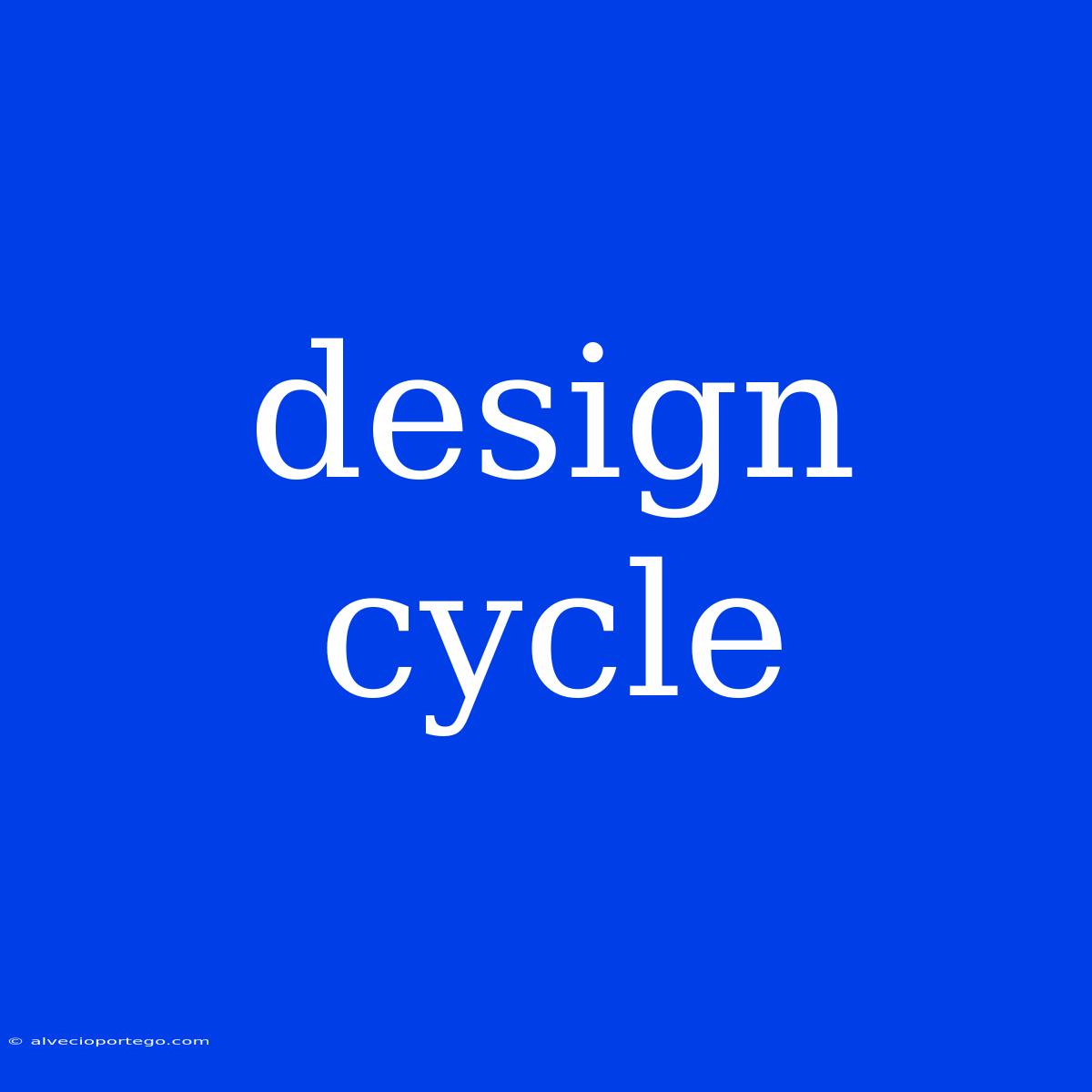The Design Cycle: A Guide to Iterative Design Excellence
The design cycle is a fundamental process that guides the creation of effective and user-centered solutions. It’s a structured approach that involves multiple phases, each with specific goals and deliverables.
This iterative process ensures continuous improvement and ensures that the final product meets the needs of both the users and the business. Here's a breakdown of the key stages involved:
1. Understand
a) Define the Problem:
- What's the user's need or pain point? Clearly identify the problem you're trying to solve.
- Who are your users? Conduct thorough user research to understand their goals, behaviors, and motivations.
b) Conduct Research:
- Gather insights: Use techniques like user interviews, surveys, usability testing, and competitor analysis to gather data.
- Analyze findings: Identify key patterns and trends in the data collected.
2. Ideate
a) Generate Solutions:
- Brainstorming: Engage in creative sessions to explore a wide range of potential solutions.
- Ideation Techniques: Use tools like sketching, mind mapping, and design sprints to foster innovative thinking.
b) Prioritize Ideas:
- Evaluate feasibility: Consider the technical and logistical constraints.
- Assess viability: Analyze the potential impact and market fit.
3. Prototype
a) Build a Low-Fidelity Prototype:
- Focus on functionality: Create a basic representation of the solution to test key interactions.
- Iterate rapidly: Use tools like paper prototypes, wireframes, or digital mockups.
b) Test and Refine:
- Gather user feedback: Conduct usability testing and gather user input.
- Iterate based on feedback: Refine the prototype to address user pain points and improve the design.
4. Test
a) Conduct User Testing:
- Observe user behavior: Analyze how users interact with the prototype and identify usability issues.
- Gather feedback: Ask users for their opinions and suggestions for improvement.
b) Analyze Results:
- Identify areas for improvement: Focus on user pain points and areas for optimization.
- Refine the Design: Iterate on the prototype based on the feedback gathered.
5. Implement
a) Finalize the Design:
- Develop high-fidelity prototypes: Create detailed and visually appealing mockups.
- Document design specifications: Provide clear instructions for developers to build the final product.
b) Build and Launch:
- Develop the final product: Work closely with developers to ensure accurate implementation.
- Deploy the solution: Launch the product to the market or to a specific user group.
6. Evaluate
a) Monitor Performance:
- Track key metrics: Analyze user engagement, conversion rates, and other relevant data.
- Gather feedback from users: Use surveys, feedback forms, and other channels to gather user opinions.
b) Iterate and Improve:
- Identify areas for optimization: Continuously refine the design based on user feedback and performance data.
- Apply learnings to future projects: Share insights from the design cycle to improve future design processes.
Benefits of Using the Design Cycle
- User-centered solutions: Prioritizes user needs and creates solutions that meet their expectations.
- Reduced risk of failure: Iterative testing and feedback help identify potential issues early in the process.
- Improved product quality: Continuous refinement ensures the final product is polished and user-friendly.
- Increased efficiency: Streamlined workflow and focused efforts contribute to a faster design process.
- Enhanced innovation: The iterative nature of the design cycle fosters creativity and promotes exploration of new ideas.
Conclusion
The design cycle is a crucial framework for creating high-quality and successful products. By embracing this iterative process, design teams can continuously learn, adapt, and deliver solutions that truly resonate with their users.

